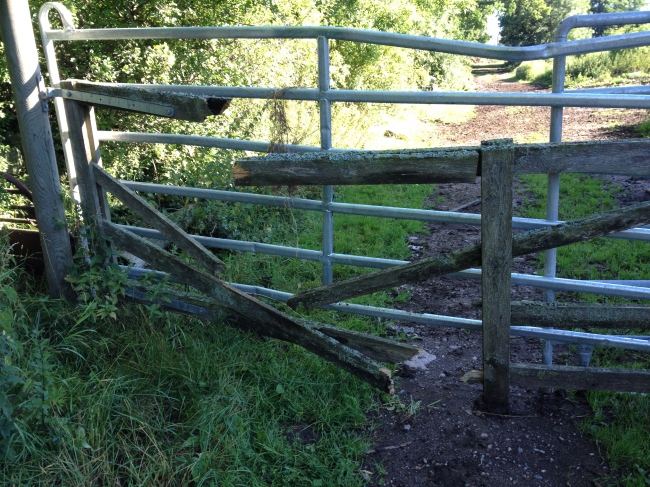Eggs That Will Put Hair on Your Chest
Introducing the magnificent, multitalented Muscovy duck (on the job)
I really like this duck… Beyond the yellow yoked eggs (see below) that are sooo thick you need a machine to whip them or the amazing omelets (see below) it enables via it’s omnivorous diet, let me tell you a little bit about this amazing little duck (that’s not so little in size and dietary selectivity).
So, what are the greatest characteristics of this duck? In my humble opinion,
– It’s independent
– Self-sufficient
– and it just so happens to love eating slugs.
All of these characteristics go a long way in the temperate and artic conditions of Sweden. Especially among food producers having to cope with the quasi-recent Spanish influx of a certain type of veggie eating slug called the ‘mördarsniglar’ (influx is estimated to have happened sometime in between 1975-‘85).
Directly translated, these slugs are called the ‘murder slugs’(!) or ‘killer slugs’ and have also strangely been called the ‘Spanish slug’ (though no one’s really certain where they originated, Spain seems to have been distant enough). Whether they came from Spain or not, one thing’s for certain (like the majority of invasive species), these little punks hitched a ride to Sweden with a little help from globalized forms of trade and they’ve had a ‘hay-day’ wreaking havoc on many of the greens grown here and throughout other parts of Europe.
Growing food in Stockholm on my small garden plot and coping with these murdering slugs was absolute hell. I became the murderer. I must have killed 20-30 slugs a day trying to keep them off my broccoli, kale and squash. Oh! How I wish I had some sort of hero to help me rid the garden of these pesky critters.
*Quack! Quack!* Enter our international hero, the Muscovy Duck
The Muscovy Duck doesn’t actually come from Moscow, it comes from Mexico, Central and South America and happens to tolerate colder conditions exceptionally well. But not everybody in the world misconstrues the origin of this duck by name. Other languages like Swedish, Norwegian, French and Russian directly translate their title given to the duck into, ‘musk duck’ (some misunderstanding must have occurred in the English language).
When it comes to food, it’s an aggressive duck that has claws at the ends of it’s webbed feet, weighs in at 15 lbs (7 kg) as a male and 7 lbs as a female (3kg+), eats just about anything that moves (or doesn’t move) and it kind of looks like an eagle (with a friendly duck head) when it’s flying and lands on ponds like a pontoon plane – the kind of bird you don’t want to mess with if you’re a predatory species.
On Öland, the Muscovy Ducks have a large role to play on farms and in gardens. At Dyestad Gård (an organic milk farm/artist community at location ‘B’ on the map in this earlier article), where I’ve been working and learning about small-scale farming, they simply let their ducks do what they want and I’ve yet to see a slug larger than my thumbnail on the premise. At Capella gård (an organic veggie farming and artist village on Öland at location ‘A’ on the map in this earlier article), where my wife is working, they ‘employ’ the ducks to protect the apple, pear, cherry and plumb trees from slugs.
And let me tell you, these little ‘quiet quackers’ do a fantastic job cleaning up house and providing us with the duel benefit of some amazing eggs. Though I must admit, one of my curiosities is in finding out how the taste of their eggs changes as their diets begin to change with the changing seasons – winter is coming!
Anyhow, if you have a slug problem, call in these ducks to do your dirty work and they’ll reward you with an amazing breakfast! (Chickens just don’t seem to have a pallet for slugs!)







